
Watermelons in Belarus: EU4Youth sowing the seeds of success
Forty-two teams from schools and non-formal education in Lojeŭ, Brahin, Čačersk, Kalinkavičy, Chojniki, Homieĺ, Pietrykaŭ and Mazyr regions joined the initiative, which was launched as a part of the EU4Youth project ‘School Garden for the Development of Agricultural Entrepreneurship’, which is funded by the European Union. Students, teachers and other participants of the experiment deployed pilot sites both in school gardens and in private plots belonging to other participants in the experiment.
The Homieĺ Regional Ecological and Biological Centre for Children and Youth took on the methodological support of the experiment, and Mecheslau Frantsavich Stiapura, Doctor of Agricultural Sciences, Associate Professor at the Institute of Vegetable Growing of the National Academy of Sciences of Belarus, became a scientific consultant.
In spring, during the seminar and several training sessions, team representatives and potential local consultants received all the necessary information on agricultural technology and the research methodology, as well as everything necessary for growing watermelons with the support of the EU and from the sponsors of the initiative, including seeds of three Dutch hybrids – ‘Top Gan’, ‘Romanza’ and ‘Beduain’ – pallets and soil for seedlings, covering material, biohumus and humic fertilizers. An electronic journal was specially developed to record the results.
 Students of Malažyn school learn how to prune the watermelon vines
Students of Malažyn school learn how to prune the watermelon vines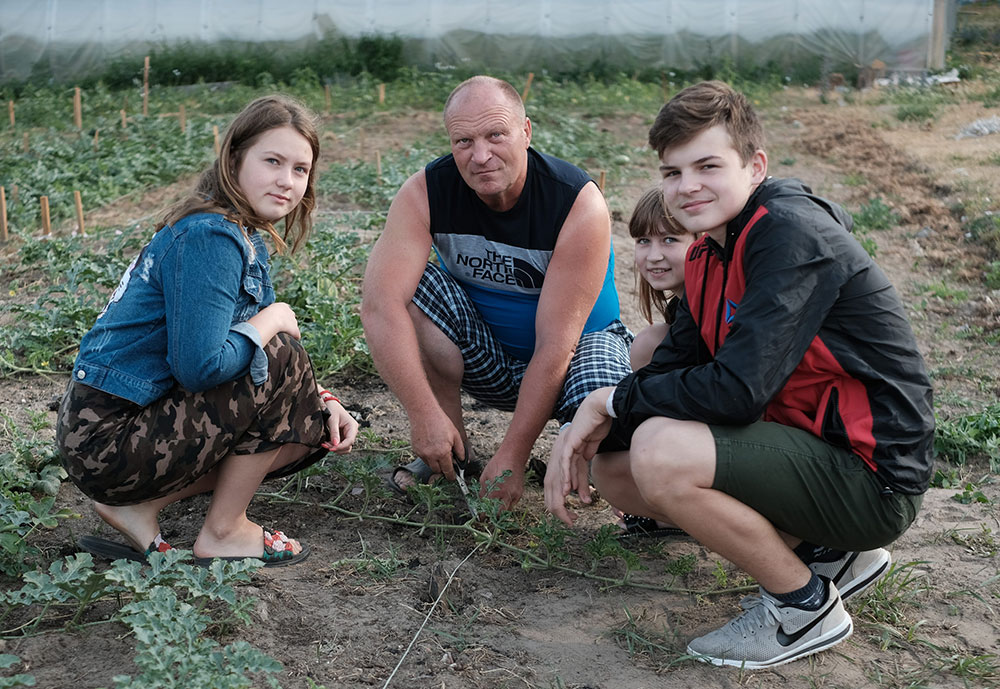 Students of Malažyn school learn how to prune the watermelon vines
Students of Malažyn school learn how to prune the watermelon vines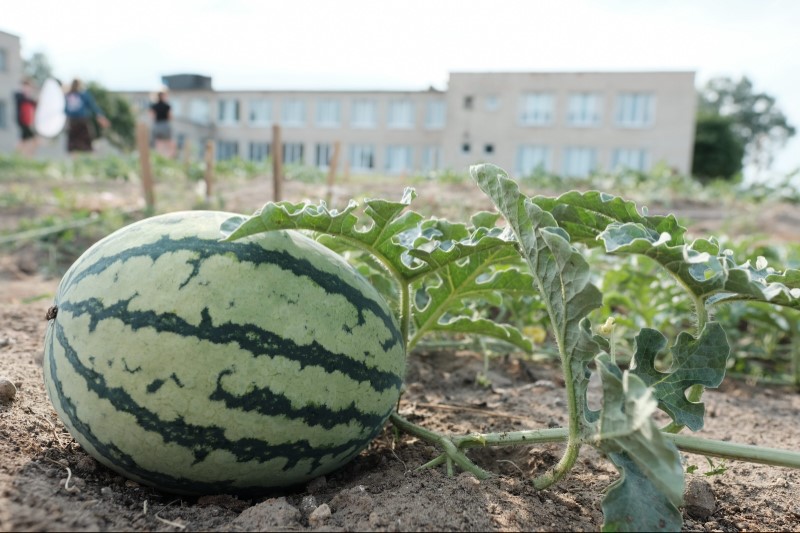 Watermelon grown within the project
Watermelon grown within the project
Alyaksandr Mishko, an active participant in the experiment from the Jolča school of the Brahin district, tales up the story: “At the first stage, we learned to take soil samples for laboratory analysis, then under the guidance of teachers we prepared a soil mixture for seedlings, and sowed the seeds. When the seedlings appeared, we looked after them, watched them grow.”
His friend Illia Šejn added: “Then it was time to plant them in an open ground. As we conducted the experiment, we first learned how to set up an experimental site to do it in the right way. Watermelon is a southern fruit, which means it loves warmth, so in May we needed to cover them so they would not freeze, to weed them, and to water. Especially in June, when it was very hot, we watered abundantly every day. ”
Sisters Valerya and Violetta Harko from Malažyn school in Brahin district described how the observations were recorded: “We made up a team, and each participant of the team had his own responsibilities. Someone planted, someone watered, someone weeded, someone covered with a greenhouse film. And we kept an experiment journal. We took pictures when the pupils did some work, wrote down the current results in a special table and made a small presentation, and then put it in an electronic journal. ”
The participants faced some difficulties during the experiment. For example, in Jolča school of Brahin district, the seeds did not germinate well due to low temperatures in the classrooms after the end of the heating season, and due to a lack of light, the seedlings stretched and were slow to develop. Therefore, the director of the school, Tatsiana Nikolaenka, offered her team to sow the watermelons directly into the ground.
“Literally all students of the school took part in our experiment, and there are 60 of them in our educational establishment. In addition, kindergarten pupils also joined. Everyone looked after his pot, measured the height of the seedlings,” says Tatsiana Nikolaenka. “This year we developed a new plot of 5,000 square metres, 400 of which we took for the watermelon experiment. The seedlings were planted on 200 parts, and the seeds were planted on two more. To tell you the truth, we developed the site a little bit late, because we managed to sow the seeds only on 30 May. And we worried a lot, because it was already very late, in addition, in our area at that time there was a great heat and drought. But drip irrigation corrected the situation and watermelons grew of the highest quality.”
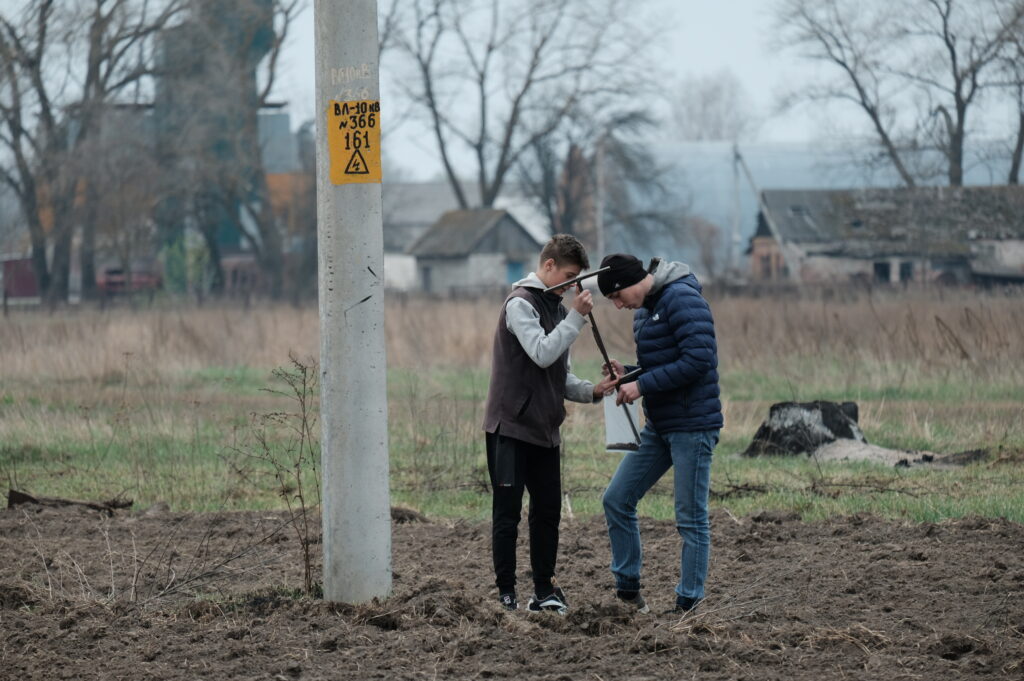 Alyaksandr Mishko and Illia Šejn, students of the Jolča school in Brahin region, take soil samples
Alyaksandr Mishko and Illia Šejn, students of the Jolča school in Brahin region, take soil samples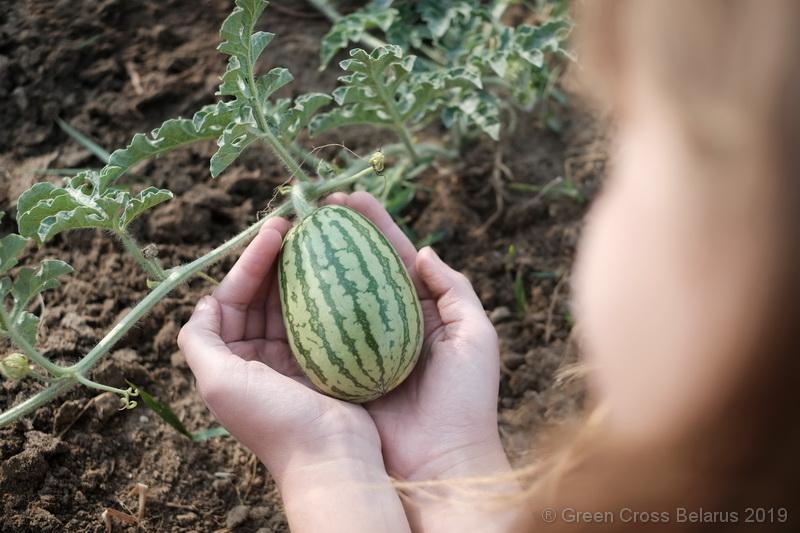 Watermelons grown within the project
Watermelons grown within the project The student of Ručajoŭka school Dyjana Kalesnikava shows the watermelon at the schoolgarden
The student of Ručajoŭka school Dyjana Kalesnikava shows the watermelon at the schoolgarden
Nadzeja Areshčenka, a teacher of chemistry and biology at Hlinišča school of Chojniki district, noted that they, like many other teams, had difficulties after planting in the ground: the seedlings did not take root well, were lethargic for a long time, turned yellow, some of them even died. In some schools, seedlings after planting were beaten by the rain.
Mecheslau Stiapura, Doctor of Agricultural Sciences, and scientific consultant of the experiment, noted that during the work participants had many different questions: how to help plants during the adaptation period after planting, how to properly process and top dress, how to sprinkle watermelon vines, when to pinch them, whether to remove excess fruit.
Despite the difficulties and changeable weather, the experimenters began to get harvest in July. And on August 24, all the teams gathered in Lojeŭ to present the results of their work.
Harvest exceeded all expectations. The head of the experiment at Ručajoŭka school of Lojeŭ district, chemistry and biology teacher Uladzimir Abibok, shared the results of the experiment: “We had several waves of the crop. In total, we harvested more than 150 watermelons from school watermelon plantations, and the biggest watermelon weighed 12 kg 250 g. If we compare the three varieties that we tested, then I would say ‘Bedouin F1’ starts its growth better than two others. The most tender variety – ‘Romanza F1’ – takes root worse, but if it has already grown, then the harvest will be more than enough. By the way, all participants of the experiment complained about this variety most of all.”
As for the taste, at first no one really believed that Belarussian watermelons could turn out so sweet. Dyjana Kalesnikava, a student from Ručajoŭka school in Lojeŭ district, was enthusiastic: “Our watermelons are equally sweet right down to the skin, and the imported ones are sweet and tasty only in the middle.” The sugar content of the watermelons was also confirmed by the express analysis, which was carried out during the competition event the ‘Day of the watermelon and his friends’. In almost all the watermelons presented, sugar content was 9%, and in some even 12%, while usual sugar content varies from 7 to 9%.
As all the participants noted, the experiment was a success. Watermelons can successfully grow in the south-east of Belarus, and give a good harvest of sweet fruit. But the main thing is that during the experiment the schools received the necessary knowledge on the cultivation of watermelon and now will be able to disseminate this knowledge, especially among their students. And this knowledge and skills can become the foundation of a future agrobusiness.
***
The project ‘EU4Youth: School Garden for Agricultural Entrepreneurship’ aims to foster the employability and active participation of young people residing in disadvantaged rural areas of Belarus, Ukraine and Moldova in society and economy by developing modern labour, leader and entrepreneur skills, and promoting new professional opportunities among them.
The EU4Youth initiative supports the employment opportunities and active citizenship of young people in the six Eastern Partnership countries: Armenia, Azerbaijan, Belarus, Georgia, the Republic of Moldova and Ukraine.
Author: Sviatlana Nikifarava
Photos: Siamion Shautsou and school archives
Article published in Belarusian by ‘Nastaunitskaya Gazeta’
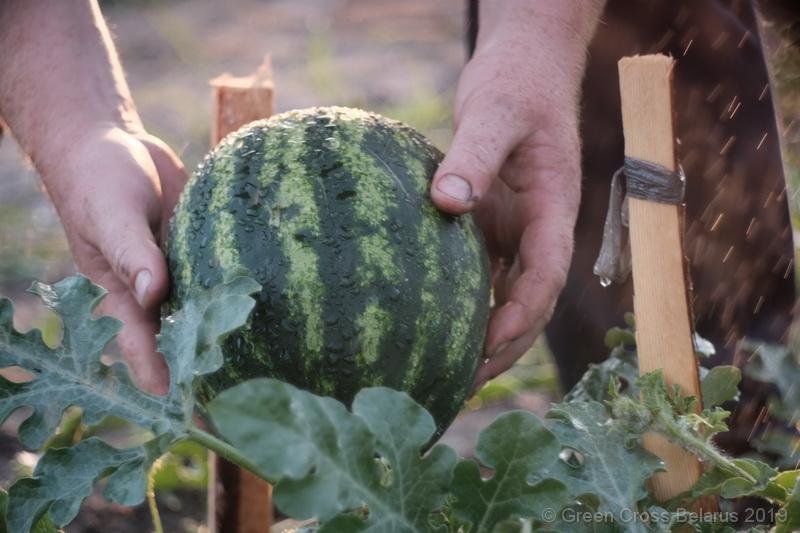 Watermelon grown within the project
Watermelon grown within the project
MOST READ
SEE ALSO
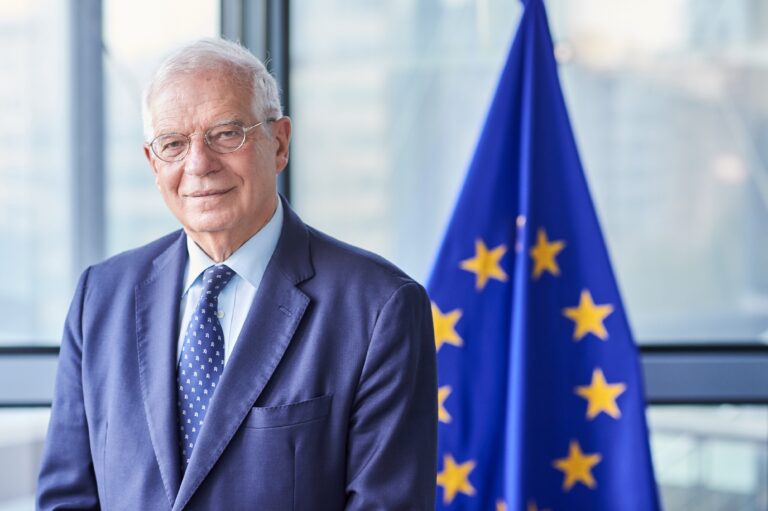
No, time is not on Russia‘s side
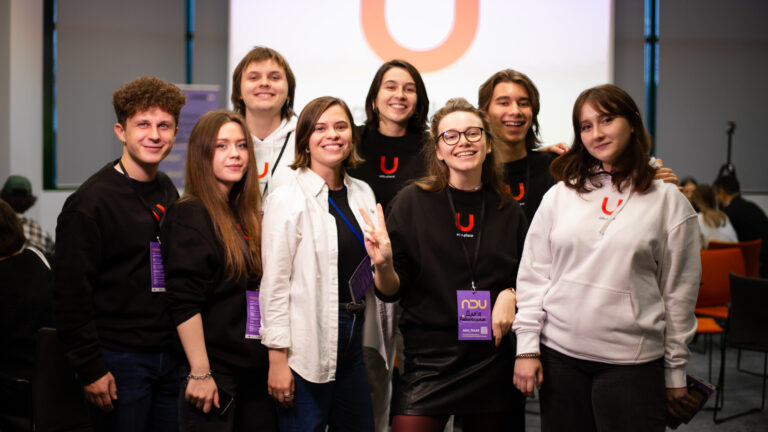
Great opportunities even if you have no money: what the EU offers Belarusian teachers and students

Be one step ahead of a hacker: check simple cybersecurity tips!
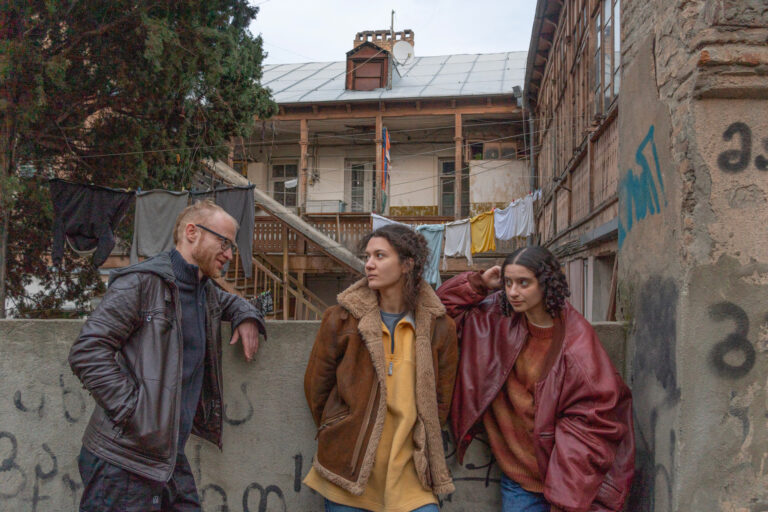
Rhisoma Lab: the intercultural hub for creatives in Tbilisi

How to act and move on: strategies for women facing discrimination and online harassment
More campaign pages:
Interested in the latest news and opportunities?
This website is managed by the EU-funded Regional Communication Programme for the Eastern Neighbourhood ('EU NEIGHBOURS east’), which complements and supports the communication of the Delegations of the European Union in the Eastern partner countries, and works under the guidance of the European Commission’s Directorate-General for Neighbourhood Policy and Enlargement Negotiations, and the European External Action Service. EU NEIGHBOURS east is implemented by a GOPA PACE-led consortium. It is part of the larger Neighbourhood Communication Programme (2020-2024) for the EU's Eastern and Southern Neighbourhood, which also includes 'EU NEIGHBOURS south’ project that runs the EU Neighbours portal.

The information on this site is subject to a Disclaimer and Protection of personal data. © European Union,







